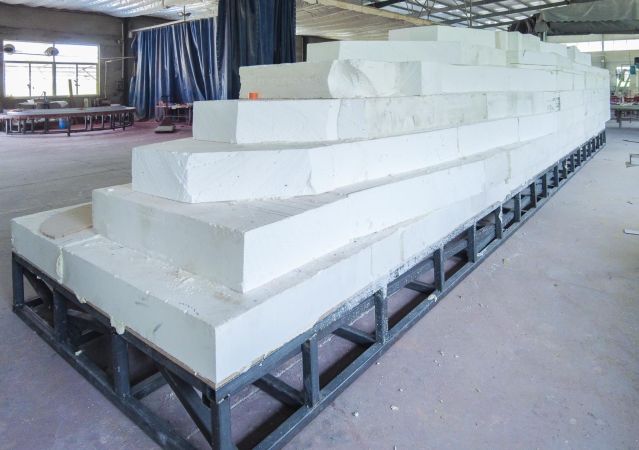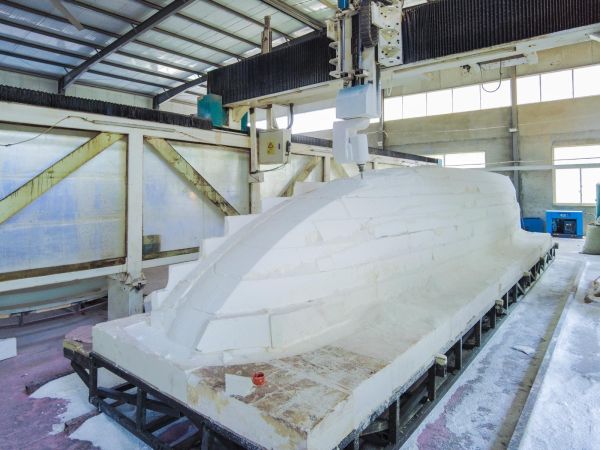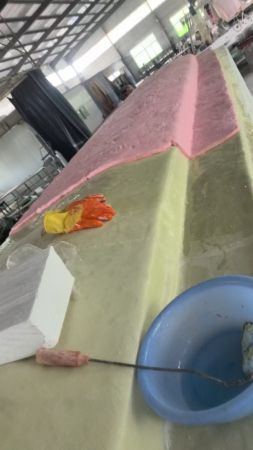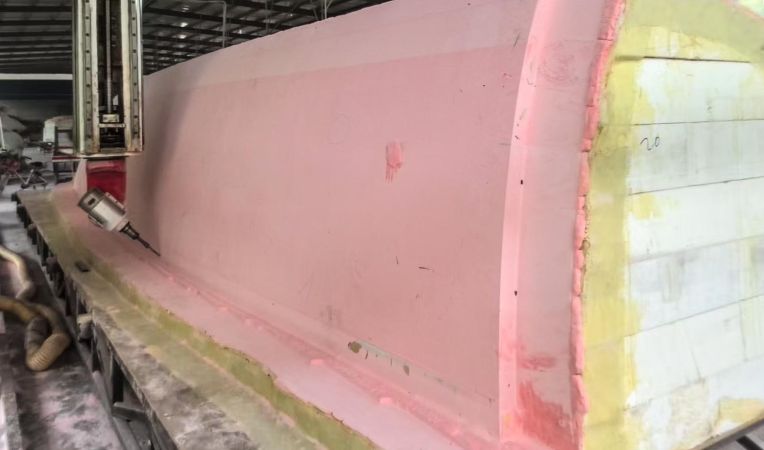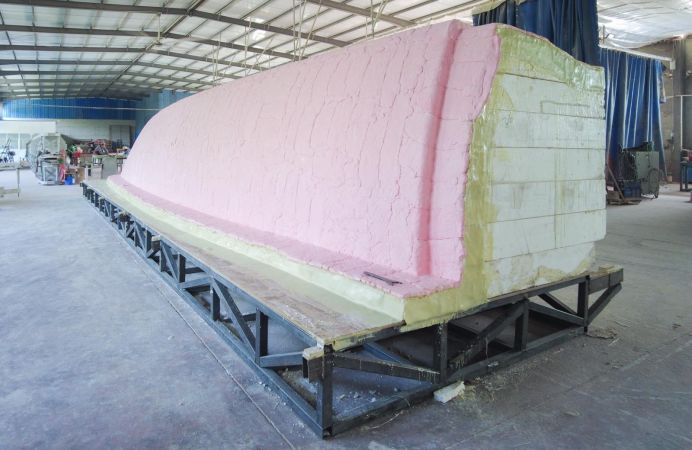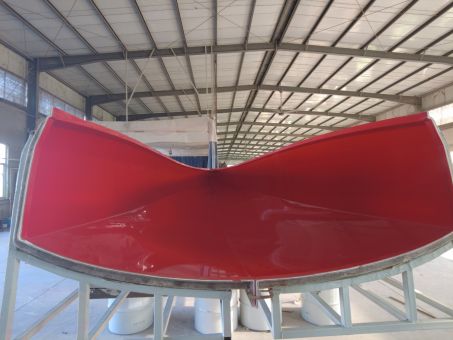
We’re delighted that the hull moulds have been produced to such an exceptional standard, achieving a gloss level of over 97 GU in mold manufacturing – an outstanding result.
Next, the deck mould will be completed, while in parallel, the first hull will be built using unidirectional carbon fibre prepregs, a 20 mm foam core, and cured under high pressure and heat.
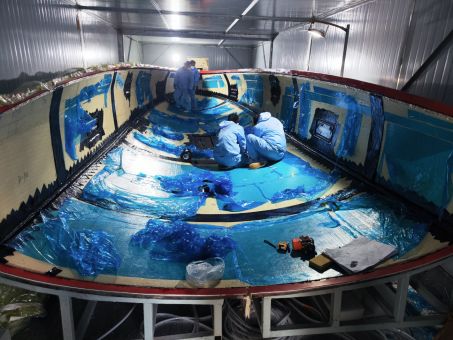
The Seafoiler 35 project continues to evolve — with major progress in carbon prepreg manufacturing and composite optimization.
Our newly developed adjustable oven has been built, tested, and fine-tuned to deliver higher heating performance and precisely controlled ventilation, ensuring perfectly uniform curing of all prepreg components.
In parallel, we’ve tested multiple prepreg laminate configurations and improved the protective films for easier and cleaner handling during layup. Following successful trials, full prepreg production has now started.
Our composite team has expanded, with new specialists trained in continuous fiber layups — a key technique that reduces fiber overlaps and optimizes load paths within the carbon structure.
The outcome:
-
Further weight reduction through the elimination of unnecessary overlaps
-
More uniform surface finish, requiring less fairing and sanding
-
Improved structural efficiency across the entire hull
Each step brings us closer to our goal — building one of the lightest and most efficient high-performance carbon monohulls in its class.
Production Kick-Off: Tooling Begins for the Seafoiler 35
Written by Christoph, 04. June 2025
With the official production start on June 1st, the manufacturing of the Seafoiler 35 has entered a new phase: the beginning of the tooling process.
The positive molds for the components are built on rigid steel frames. First, XPS is applied and CNC-milled, then coated with fiberglass and resin, and layered with PU modeling paste – followed by another round of CNC machining to achieve maximum precision. This process results in highly accurate master models that serve as the basis for the later composite production.
Through several sanding and filling cycles, the molds are further refined with various materials depending on specific requirements. The goal: a flawless surface finish for the subsequent laminate construction – from hull to cockpit, from foil case to deckhouse.
The Seafoiler isn’t just striking in appearance – it’s a masterpiece of engineering. Its speed, lightness, and stiffness come from advanced aerospace-inspired construction using carbon fiber, epoxy resin, and prepregs.
A Structure with Purpose
The hull, deck, and foils are built entirely from unidirectional carbon fibers, laid precisely in the direction of load paths. This ensures every fiber works at maximum efficiency – delivering exceptional stiffness at the lowest possible weight.
Resin, Reinvented
Instead of traditional hand layup, the Seafoiler uses prepregs – pre-impregnated carbon fibers with a precisely calibrated amount of epoxy resin. This results in a perfect fiber-to-resin ratio, giving the structure both lightness and superior mechanical properties.
High-Tech Core
The foils and hull are constructed in a high-performance sandwich design: a lightweight foam core is enclosed between carbon skins. Just like an I-beam, this structure offers excellent rigidity with minimal mass – ideal for high-speed sailing.
The Result: Technology That Flies
The Seafoiler applies cutting-edge materials and techniques inspired by aerospace and Formula 1 – tailored for life offshore. The result is a boat that not only flies across the water, but sets new standards in construction.
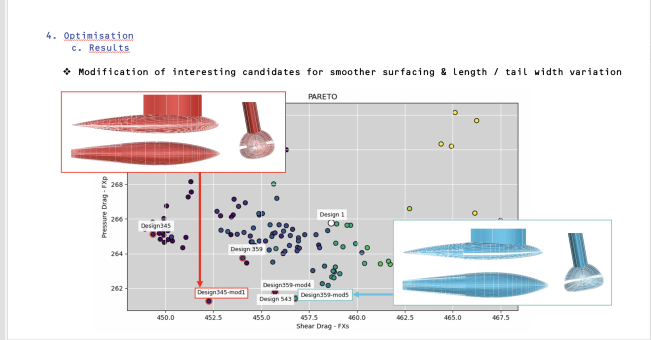
The optimization aimed to strike the best possible balance between low forward drag force (FX) and high lateral lift force (FY). Simulations considered two representative sailing conditions derived from the Velocity Prediction Program (VPP): a light wind condition at 5.3 knots with high leeway angle, and a high-speed condition at 20.8 knots.
Simulation & Design Space
The bulb geometry was controlled via 24 parameters, including top and bottom curves as well as the side profile. Over 600 design variants were generated, with 130 of them evaluated through high-resolution CFD simulations (25 million cells). A custom optimization loop automatically assessed objective functions while ensuring compliance with strict constraints: maximum length of 2.2 meters, projected area, and minimum inertia at three defined cross sections.
Round or Sharp Leading Edge?
The analysis revealed clear differences: a round leading edge delayed the transition to turbulence, reducing shear drag, while a sharp nose reduced pressure drag. Further refinements, including smoother surface transitions and variations in length and tail width, ultimately led to the selection of an optimal design.
Result: A Bulb That Delivers
The selected bulb design combines minimal drag with maximum lateral lift — while
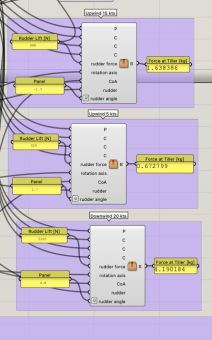
Tomas from D3 Applied tech optimizes the rudder geometry for different speeds and an ideal steering feel. After numerous simulations, we decided on the following settings:
-
Upwind 5 knots: 0.67 kg
-
Upwind 15 knots: 1.63 kg
-
Upwind 20 knots: 4.1 kg
In addition, we define hole positions that allow for different steering characteristics to be adjusted according to the helmsman's preferences.
In our weekly meeting, we were presented with the latest simulation results – and the computers at D3 Tech were running hot.
The team investigated whether the Seafoiler, equipped with additional rudder foils, would be even more stable – and potentially faster – in moderate sea conditions at 20 knots of true wind speed. The simulations were run using the weight of the Luxury Racer (LR). Two configurations – the green and the blue hull – went head-to-head. The outcome: a clear tie.
Our conclusion? When the boat is perfectly balanced, rudder foils aren’t necessary. That’s great news – it allows us to offer our clients a less complex, more user-friendly boat with the added benefit of lower costs.
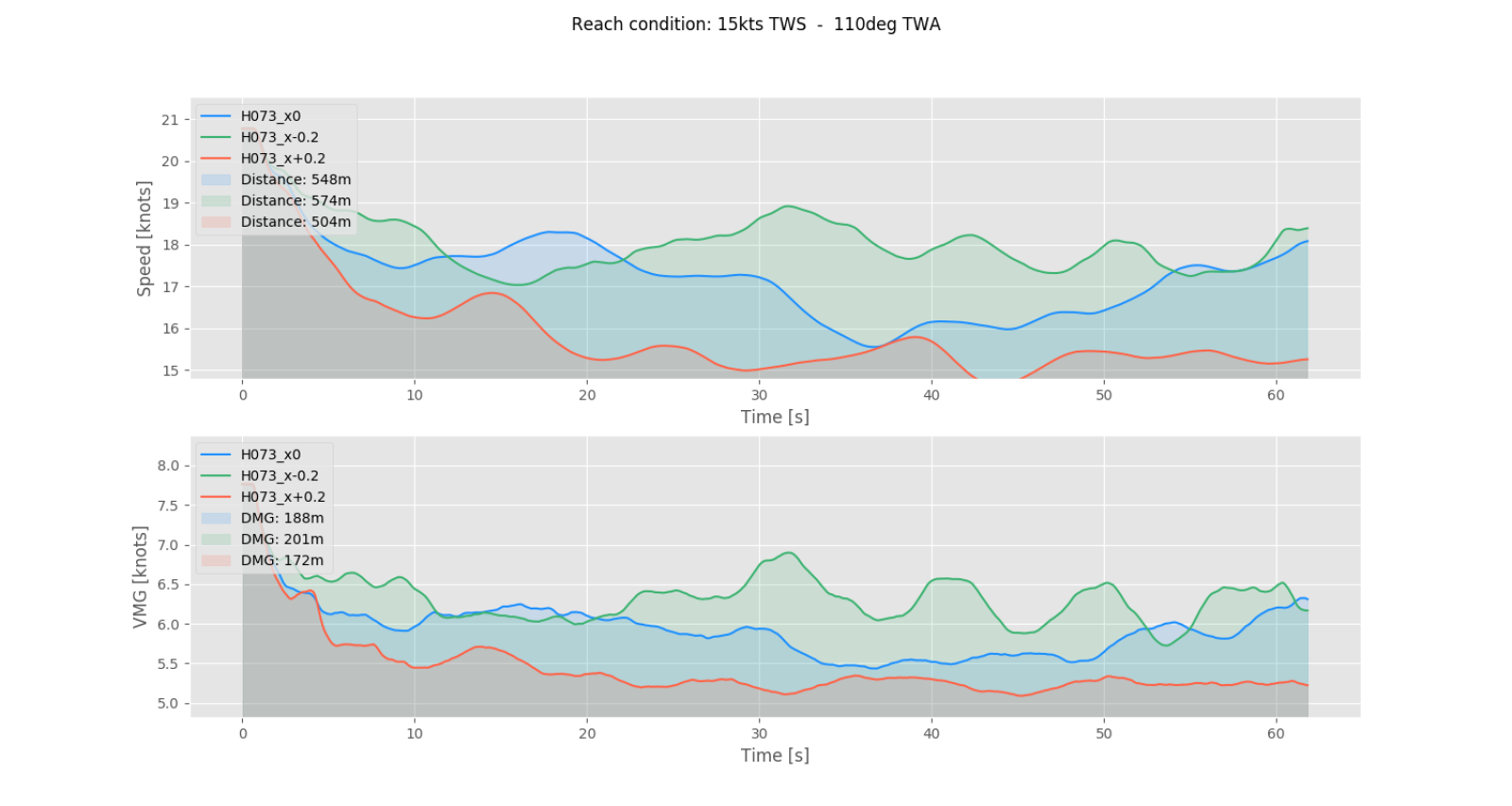
How much difference can 20 centimeters make? Quite a lot, as our latest simulations with the Seafoiler 35 clearly demonstrate.
Under steady reaching conditions (15 knots true wind speed, 110° true wind angle), we tested three foil positions: the baseline configuration (x0), as well as variants with the foil moved 20 cm forward (x–0.2) and 20 cm aft (x+0.2).
The verdict is clear: shifting the foil forward (x–0.2) consistently delivered the highest average speed and the most effective Velocity Made Good (VMG). With over 574 meters sailed in 60 seconds and a VMG-corrected distance of 201 meters, this setup marks the new benchmark for efficient reaching performance.
These tests confirm what every performance sailor knows: even minor adjustments to foil geometry can lead to measurable gains in speed, balance, and directional efficiency. A key milestone on the road to finalizing the Seafoiler 35’s optimized foil layout.
Today, Gonzalo and his team from D3 Applied Technologies are presenting the exciting results of an intensive optimization phase. At the center of their work: the precise alignment of foil and keel positions to perfectly balance the Seafoiler at 20 knots of true wind speed and moderate sea state.
This is not only a milestone in performance development – it’s the starting point for a new round of targeted innovation. We’re looking forward to the next steps in this pioneering project.
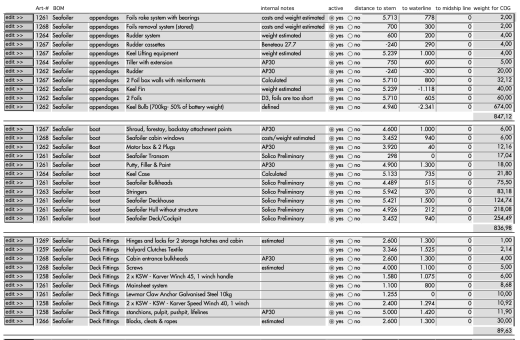
Hans from Aeomar has updated the weight list. Every single screw is meticulously positioned with its distance from the stem and the waterline. We need this information to balance the center of gravity (COG). Only based on this data can accurate simulations be performed. I’m very grateful to Hans for taking on this time-consuming but extremely important task on behalf of all of us.
